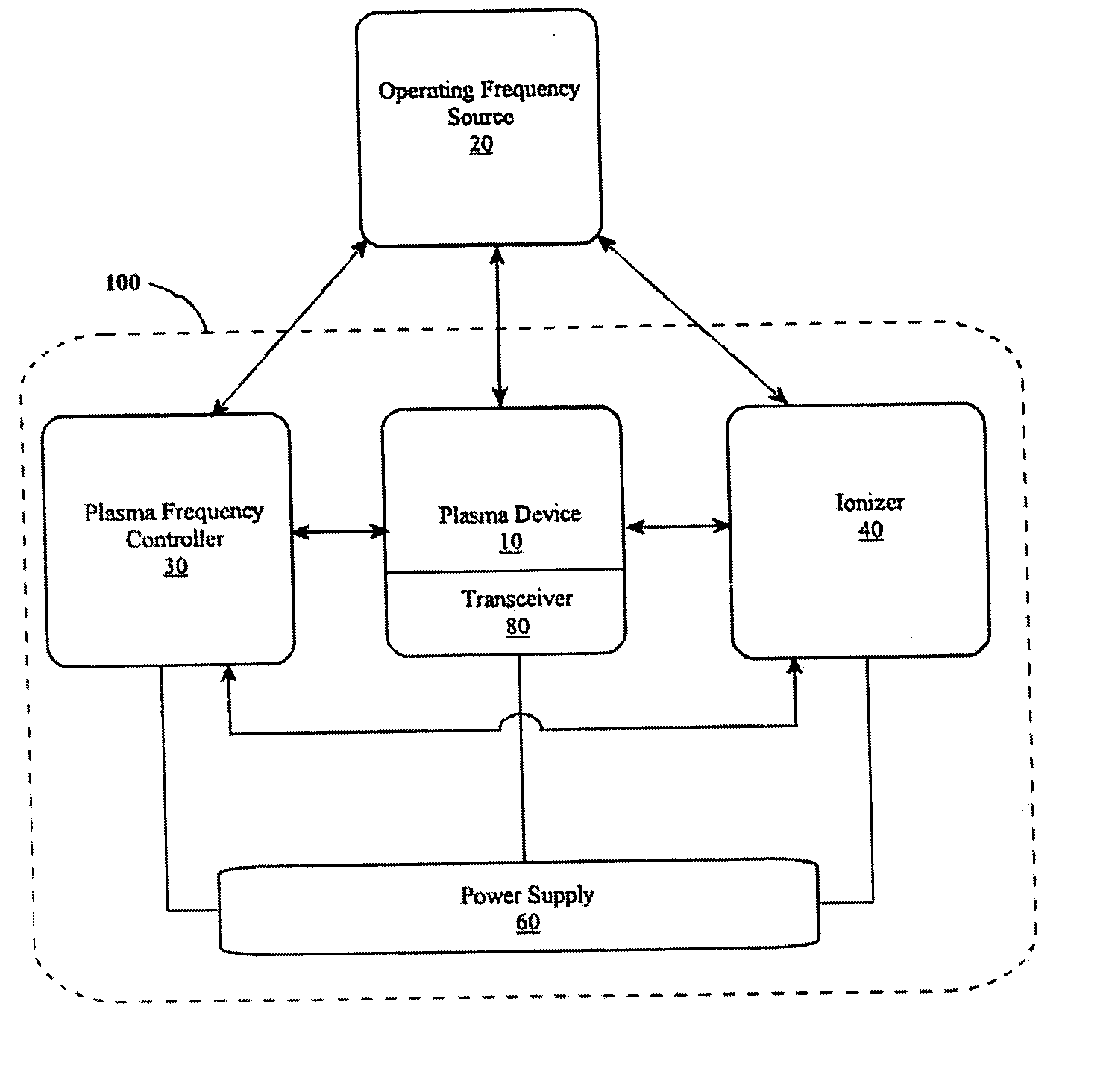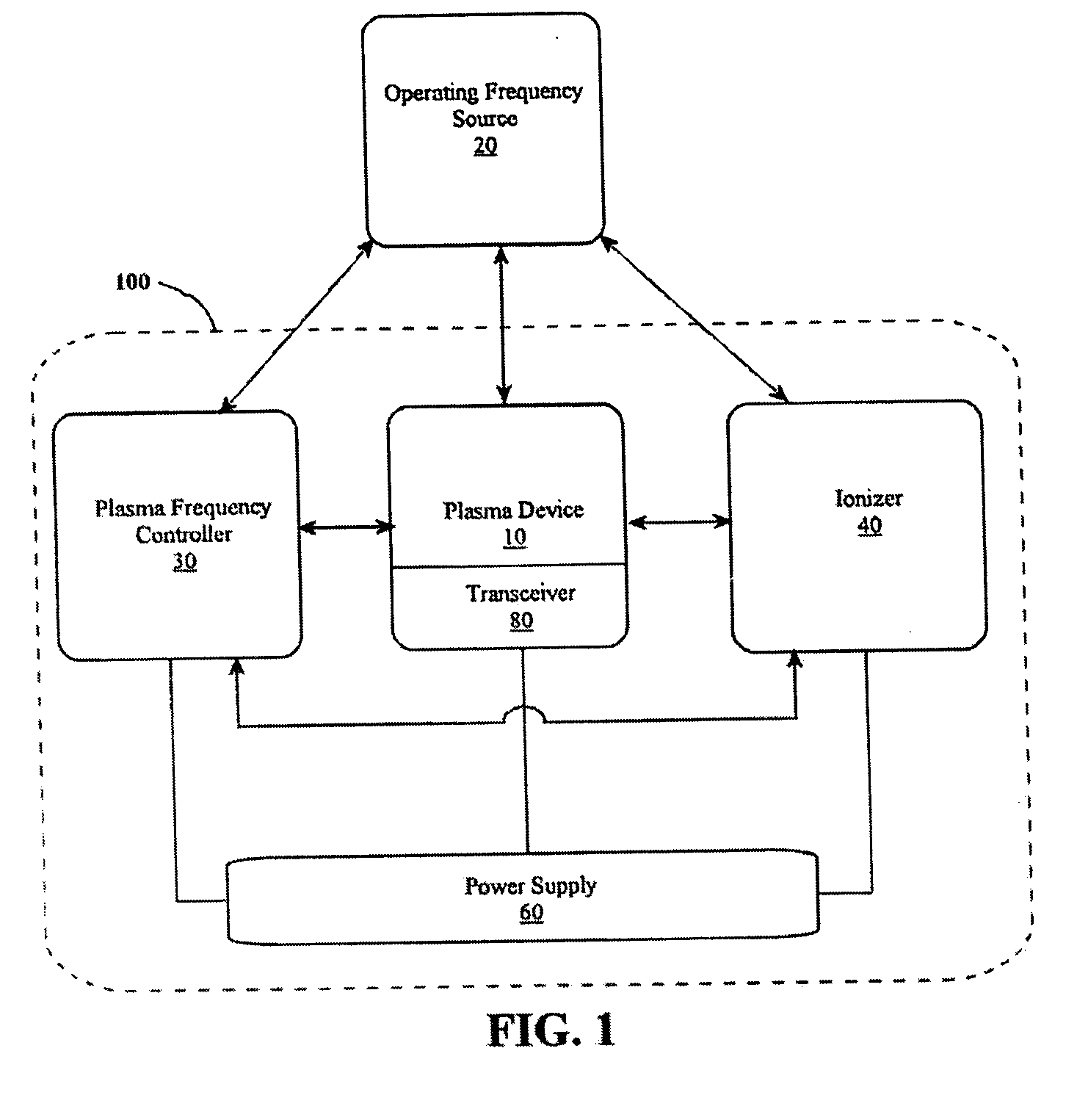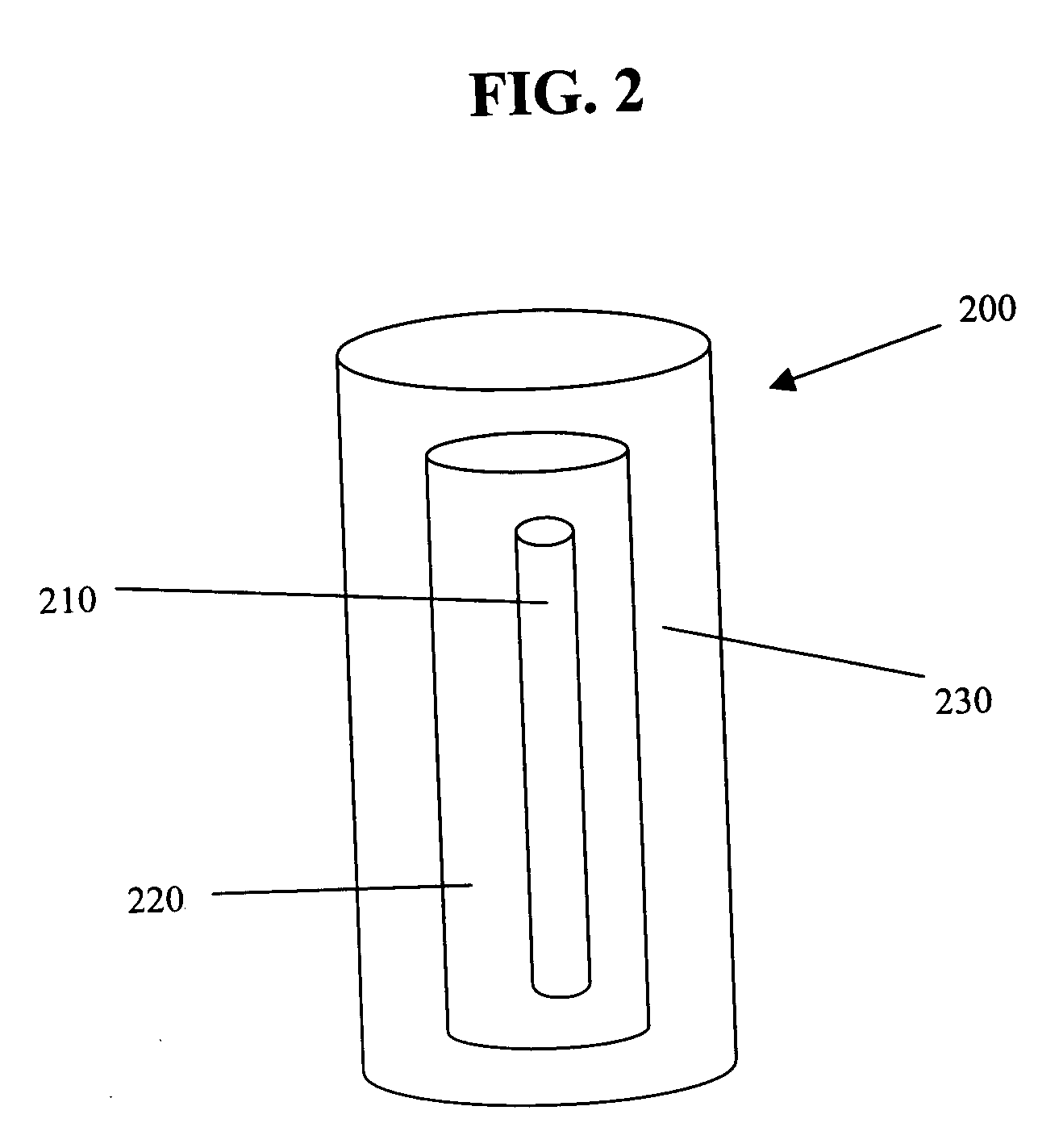Tunable plasma frequency devices
a plasma frequency and device technology, applied in the direction of plasma technique, electric discharge lamp, radiating element structure form, etc., can solve the problems of increasing the size of the antenna array, not revealing the matching of plasma frequency to operating frequency, and the breadth of metal antennas is somewhat limited, so as to achieve good antenna characteristics and high efficiency , the effect of large antenna apertur
- Summary
- Abstract
- Description
- Claims
- Application Information
AI Technical Summary
Benefits of technology
Problems solved by technology
Method used
Image
Examples
Embodiment Construction
[0040] Certain terms and the physics of reflection and transmission of electromagnetic waves through plasma will first be discussed briefly for a better understanding of the invention. In particular, the following definitions are needed to best understand the invention.
[0041] When an electromagnetic wave from an antenna of frequency ω is incident on a plasma with a plasma frequency ωp, the plasma density is proportional to the square root of the density of unbound electrons in the plasma and is a measure of the amount of ionization in the gas of the plasma. The plasma frequency ωp is thus defined as: ωp=4π noⅇ2m
where: no is the density of unbound electrons, [0042] e is the charge on the electron, and [0043] m is the mass of an electron.
[0044] If the incident antenna frequency on the plasma is much greater than the plasma frequency, so that ωωp, the antenna radiation passes through the plasma without attenuation. And, when the incident frequency is much smaller than the plasm...
PUM
 Login to View More
Login to View More Abstract
Description
Claims
Application Information
 Login to View More
Login to View More - R&D
- Intellectual Property
- Life Sciences
- Materials
- Tech Scout
- Unparalleled Data Quality
- Higher Quality Content
- 60% Fewer Hallucinations
Browse by: Latest US Patents, China's latest patents, Technical Efficacy Thesaurus, Application Domain, Technology Topic, Popular Technical Reports.
© 2025 PatSnap. All rights reserved.Legal|Privacy policy|Modern Slavery Act Transparency Statement|Sitemap|About US| Contact US: help@patsnap.com



